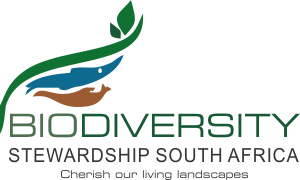
Biodiversity Stewardship SA
The Biodiversity Stewardship South Africa (BSSA) programme is an initiative of the national Department of Environmental Affairs and Tourism (DEAT) in partnership with key conservation organisations. The BSSA programme was conceptualised by a coalition of non-governmental organisations during an exploratory workshop in 2005. The Endangered Wildlife Trust (EWT) then approached DEAT’s Directorate: Biodiversity Conservation with a proposal to develop the stewardship concept further. A Memorandum of Agreement was signed by the two parties and the EWT started Phase 1 of the programme in August 2006.
The BSSA is an umbrella programme that provides a powerful new tool to assist national and provincial government in fulfilling its mandate to conserve biodiversity outside of state-owned protected areas, in terms of the National Environmental Management: Protected Areas (Act 57 of 2003) and Biodiversity (Act 10 of 2004) Acts. The programme helps to implement provincial conservation plans through a consistent, national, landscape-scale approach to stewardship. It also assists government in meeting the targets set out by the National Spatial Biodiversity Assessment and the National Biodiversity Framework (NBF).The BSSA’s goals are aligned with those of DEAT’s National Protected Areas Expansion Strategy and Community-Based Natural Resource Management (CBNRM) programme.
Vision, goals and principles
a) The vision of Biodiversity Stewardship South Africa is:
for all land with high biodiversity value outside of formally protected areas to have secure legal protection through conservation stewardship agreements and be linked to a network of other conservation areas in the landscape. This will be based on strong partnerships between conservation agencies and landowners that result in good biodiversity management practice and in tangible benefits for landowners.
b) The goals of Biodiversity Stewardship South Africa are:
Responsibilities for implementation
The current institutional structure of the BSSA programme is represented in the diagram at the end of this section. In Phase 1 the programme has been driven by an Executive Reference Group with representatives from the Botanical Society, the EWT, WWF-South Africa, the Maloti Drakensberg Transfrontier Project and the Directorate: Biodiversity Conservation of DEAT. A National Advisory Committee ensures that development of the initiative is in line with the biodiversity goals of the provinces, drawing particularly on the experience of KwaZulu-Natal and the Western Cape.
The National Biodiversity Framework provides that DEAT (Directorate: Biodiversity Conservation) will actively co-ordinate the programme once the developmental phase (Phase 1 & 2) is complete in 2008/9, with responsibility for implementation delegated to the provincial conservation authorities. Each Province needs to identify a conservation agency or organisation which can be the Implementing Agent for the programme in that province. One of the main objectives for the second phase is for DEAT and the coordinator of the BSSA to play a more supportive role towards the provincial authorities in developing their approach.
As the co-ordinating agency, DEAT will have the following areas of responsibility:
Roles and responsibilities
For the purpose of achieving biodiversity stewardship with the primary goal of site security, the objectives during the process need to include the following (in order of priority):
Prerequisites for meeting the above objectives are as follows:
BIODIVERSITY STEWARDSHIP FACT SHEET

KZN BIODIVERSITY STEWARDSHIP BROCHURE
